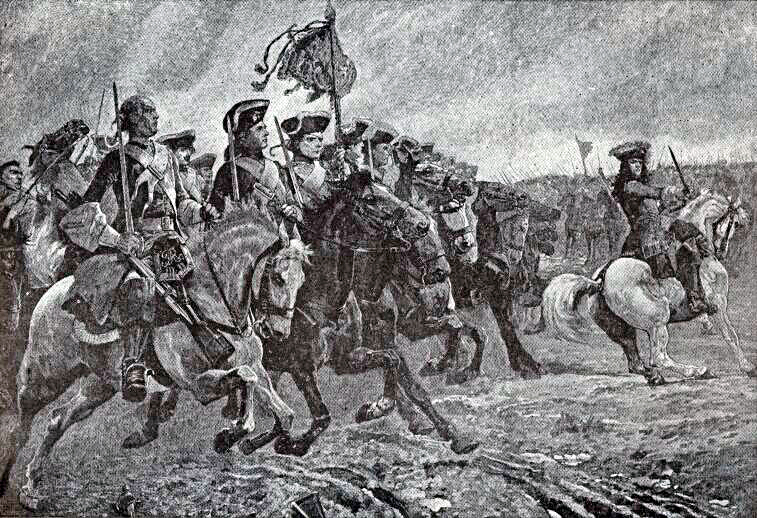The War of the Spanish Succession lasted from 1701 to 1714.
France vs. Austria
France vs. Austria
Spain (loyal to
Philip V) Preussia
Bavaria Hanover
Mantua Great Britain
Savoy
The Dutch Republic
Portugal
Spain (opposed to Philip V)
Background:
With the death of Charles II of Spain who died without a male heir two contestants claimed the throne of Spain. One was Philip V, who until then had held the title of Duc d'Anjou at the French court; he was also the grandson of Louis XIV. The other was Archduke Charles from the house of Habsburg. In fact Charles II had actually proclaimed Philip V to be his successor but as often before no one seemed to care about the monarch's will once he was actually dead.
The situation would seem rather easy to solve if it had not been down to the fact that Philip's Spanish grandmother, Maria Theresa, who was the wife of Louis XIV and sister of Charles II had renounced her rights to the Spanish throne on condition of a massive dowry of 500.000 - but the dowry was never paid. This meant that her renunciation was viewed as invalid because Spain had never fulfilled her part of the agreement. The mother of Archduke Charles was also a sister of Charles II and she had also renounced her rights upon her marriage to Ferdinand III, Holy Roman Emperor. However, since Maria Theresa was the eldest sister she was given the advantage which was made even greater by her missing dowry.
 |
| Duc de Villars (far right) leads his troops in the Battle of Friedlingen which the French won |
Trivia - the French court and the War of the Spanish Succession
- Louis XIV had an army of just above a quarter of a million men - 255.000 to be more precise
- In 1709 Louis XIV was approached with peace conditions that were very hard on France; in response he issued a public request for support from his people to help him keep France's dignity - 90.000 men enlisted
- There were five French noblemen - besides the King - who were generally in charge: The Duc de Villars, Duc de Vendôme, Duc de Boufflers, Duc de Villeroi and the Comte de Tessé.
- Louis XIV had to agree to end the war due to financial chaos in France
- The winter of 1709 was one of the most severe seen in ages and devastated the King's treasury and his peasants
- The Battle of Blenheim (illustrated below) was the first mayor military defeat of the French in over 40 years
 |
| Battle of Blenheim in 1704 |
Outcome:
Out of the three treaties designed to end the war two are more important: the Treaty of Utrecht and the Treaty of Baden.
The Treaty of Utrecht was signed in 1713 and is really a line of agreements of peace between France and Great Britain, Savoy, the United Provinces (The Dutch Republic) and Portugal.
The Treaty of Baden was signed in 1714 and finalised the peace by bringing France and the Holy Roman Empire to peace.
The overall result was that Philip V was accepted as King of Spain under the condition that he formally renounced his claims to the French throne. France got to keep everything she had conquered but had to accept Great Britain's territories of Newfoundland and Rupert's Land - they also had to give Acadia to the British.

No comments:
Post a Comment